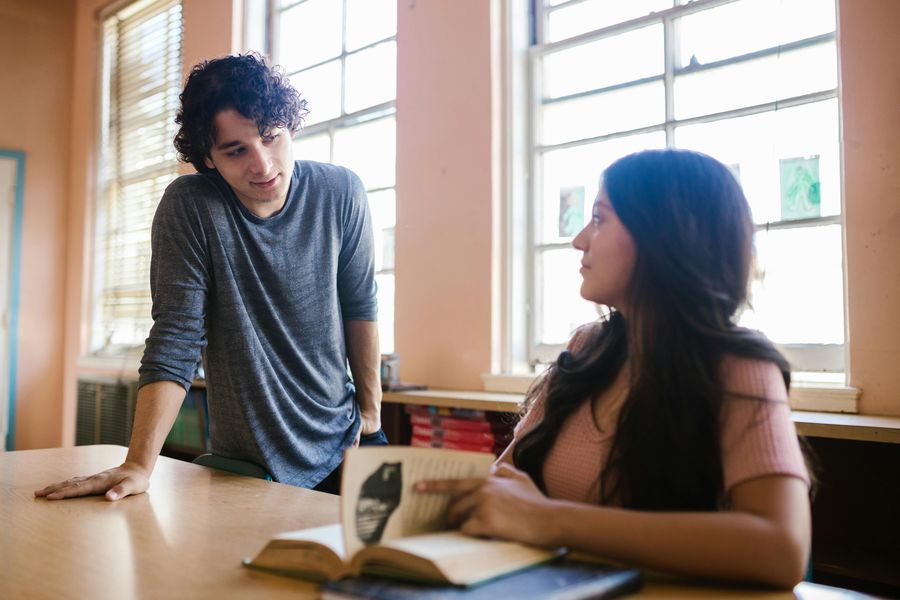Have you ever been in a relationship and thought to yourself, “This seems too good to be true?” You might start second-guessing yourself and wondering if you missed some red flag that could spell trouble in the future. But what if I told you that looking for green flags in a relationship is just as important as watching out for red flags?
In this article, we’ll explore what green flags are and why they should matter just as much as red flags. What Are Green Flags In A Relationship?
You’ve probably heard of red flags in a relationship before: warning signs that something isn’t right and that you should proceed with caution. Think of things like possessiveness, jealousy, or an inability to communicate effectively.
But what are green flags, and why do they matter? Simply put, green flags are positive signs that a relationship is healthy, happy, and sustainable.
These are the things that make you feel secure, comfortable, and valued in your relationship. Unlike red flags, which are often more obvious and easy to spot, green flags can be more subtle.
Examples of Green Flags
Here are some examples:
-
Common Values
One major green flag in a relationship is having common values.
This means that you and your partner share similar beliefs and priorities when it comes to things like family, career, spirituality, culture, politics, and so on. You don’t have to agree on everything, of course, but having a strong foundation of shared values helps to build trust and mutual respect.
It also means that you’re more likely to be on the same page when it comes to important decisions or conflicts.
-
Respectful Communication
Another important green flag is respectful communication. This means that you and your partner are able to have open and honest conversations without resorting to name-calling, yelling, or belittling each other.
You listen to each other’s perspectives and ideas, even if you don’t always agree. You also give each other space to process emotions and come back to the discussion when you’re feeling calmer.
This kind of communication builds intimacy and trust in a relationship.
-
Mutual Support
A third green flag is mutual support. This means that you and your partner are there for each other through thick and thin, and you encourage each other to pursue your goals and dreams.
You celebrate each other’s successes and pick each other up when things don’t go as planned. This kind of support fosters a sense of partnership and mutual respect, which is essential for a healthy relationship.
-
Independence
Finally, another important green flag is individual independence.
This means that you and your partner don’t rely on each other for your happiness or sense of self-worth. You have your own interests, hobbies, and friendships outside of the relationship, and you encourage your partner to do the same.
This kind of healthy boundary-setting can actually make a relationship stronger, because it allows each person to bring their best selves to the table.
Why Should You Look For Green Flags In A Relationship?
So why does it matter if you look for green flags in a relationship? After all, isn’t it enough to just avoid red flags and hope for the best?
Well, not quite. Here are some reasons why green flags are just as important as red flags:
-
They Build Trust And Intimacy
Green flags are the building blocks of trust and intimacy in a relationship. When you have shared values, respectful communication, mutual support, and individual independence, you’re creating a strong foundation on which to build a happy and healthy partnership.
This kind of trust and intimacy can help you weather difficult times, because you know that you have each other’s backs.
-
They Foster Positive Growth
Green flags also help foster positive growth in a relationship. When you and your partner share similar values and communicate respectfully, you’re more likely to grow and learn together.
You’ll be able to challenge each other in a supportive way, and you’ll have a shared sense of purpose and direction. This kind of growth can help deepen your connection and create a sense of personal fulfillment.
-
They Promote Longevity
Finally, green flags can help promote longevity in a relationship.
When you have a strong foundation of shared values, respectful communication, mutual support, and individual independence, you’re more likely to be happy and fulfilled in the long run. You’ll be able to weather the ups and downs of life together, and you’ll have a sense of security and stability that can last a lifetime.
In Conclusion
In conclusion, looking for green flags in a relationship is just as important as watching out for red flags. Green flags are the positive signs that a relationship is healthy, happy, and sustainable, and they include things like shared values, respectful communication, mutual support, and individual independence.
By seeking out these green flags, you can build trust and intimacy, foster positive growth, and promote longevity in your relationship. So the next time you’re wondering if someone is the right fit for you, don’t forget to look for those all-important green flags!
Sometimes in a relationship, it’s hard to distinguish between a bad day or a red flag.
That’s why it’s important for people to also pay attention to green flags. Green flags are signs of healthy relationships and they can help you find the right partner to build a long-lasting relationship with.
More Green Flags
Here are 13 green flags in a relationship to look forward to:
-
Emotional Support
A partner who provides emotional support is a positive sign of a healthy relationship.
When things are tough, it’s important to have someone to lean on. A partner who is there to listen, provide comfort and encouragement can create a strong bond.
-
Comfortable Silence
Being comfortable in silence is a green flag that your relationship is on the right track.
It’s often said that if you can be comfortable with someone in silence, you know that you have a strong connection.
-
Respect for Boundaries and ‘No’
When your partner respects your boundaries and understands the importance of the word ‘no,’ it shows that they value your autonomy and are willing to prioritize your comfort over their own desires.
-
Shared Responsibilities
Having a partner who is interested in sharing responsibilities can help keep a relationship balanced. When partners share household chores or financial responsibilities, it allows for more mutual support and can lead to a more satisfied partnership.
-
Eye Contact
Eye contact is an important indicator of attraction and connection.
A partner who looks you in the eyes while talking to you shows that they are interested in what you have to say and value your opinion.
-
Emotional Availability & Vulnerability
Being emotionally available and vulnerable with your partner helps to build trust and intimacy. When your partner is comfortable sharing their emotions with you, it shows that they trust you with their feelings.
-
Planning for the Future Together
Discussing future plans with your partner shows that you both are considering a commitment to each other.
Having similar goals and priorities can lead to a strong and lasting relationship.
-
Prioritizing Each Other in Daily Life
Making time for each other in daily life can help communicate a sense of love and priority. Prioritizing each other, showing affection, and spending quality time can help build a strong foundation for a sustainable relationship.
-
Importance of Undivided Attention
Giving your undivided attention to your partner shows that you are actively listening and valuing their thoughts and feelings.
This active listening helps build trust and intimacy, making it easier to resolve conflicts in a healthy way.
-
Non-Sexual Intimate Touch
Non-sexual touch such as hugs, sitting close together, or holding hands can help communicate affection and intimacy. Regular intimacy without the expectation of a sexual outcome can create a lasting bond and contribute to the longevity of a relationship.
-
Problem-Solving Approach
When conflicts arise, approaching them in a problem-solving way, rather than viewing them as competition, is a green flag in a relationship.
This approach allows both partners to feel heard, understood, and valued.
-
Confidence and Self-Assurance
Confidence and self-assurance are crucial for leading a healthy life as well. In a relationship, having a partner who has these qualities can positively influence your own sense of worth and confidence, aiding in personal growth.
-
Finding Joy in the Ordinary
Finding joy in mundane, everyday activities is a green flag that shows how you both work well together.
Being able to share happiness in simple moments like walking in the park, cooking together, or having a movie night, can make daily life more enjoyable and help to deepen connection.
Conclusion
It’s important that we distinguish the healthy and happy moments in our relationships from the red flags that require us to be cautious. Looking for green flags in a relationship is just as important as identifying red flags.
Having a positive, healthy relationship is all about balance and finding it through both green and red flags. The absence of red flags doesn’t necessarily mean the relationship is perfect, but noticing these green flags can make a difference in building a happy and fulfilling long-term commitment.
In conclusion, recognizing both green flags and red flags in a relationship is essential for building a strong and long-lasting partnership. Green flags are the positive signs that a relationship is healthy, happy, and sustainable, and they include things like shared values, respectful communication, mutual support, and individual independence.
By seeking out these green flags, you can build trust and intimacy, foster positive growth, and promote longevity in your relationship. In contrast, recognizing red flags can help you avoid potentially unhealthy or abusive relationships.
The importance of understanding both green and red flags is essential for finding the right partner and building a fulfilling and rewarding relationship.



